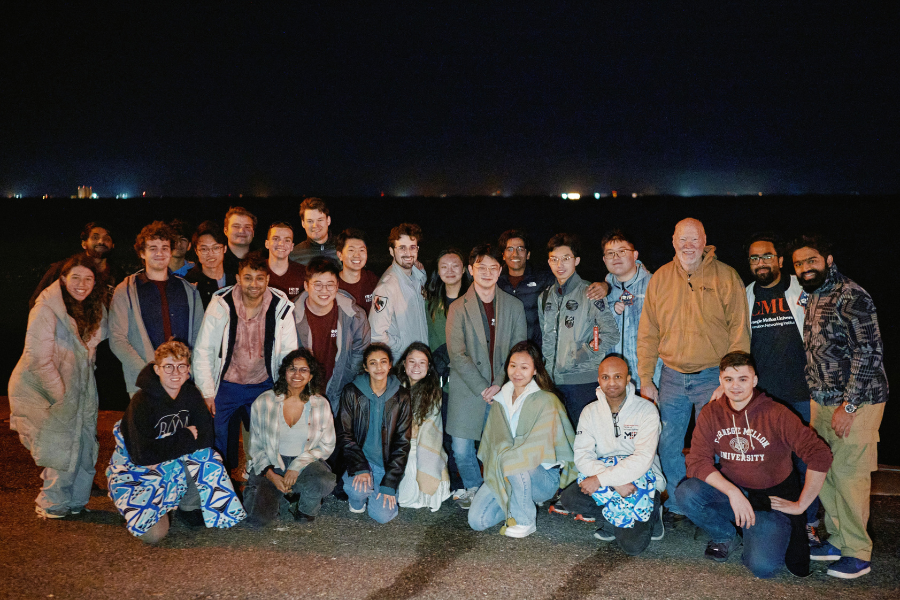
How INI Alumni Harshvardhan Chunawala and Hunter Wodzenski Helped Send the Iris Rover to Space
By INI Communications
Media InquiriesIn a groundbreaking endeavor that harmonizes innovation with exploration, Carnegie Mellon University's (CMU) Iris Lunar Rover embarked on Peregrine Mission One on January 8, 2024, at 2:18 a.m. from Cape Canaveral SLC-41 that transcended beyond the confines of our world. The initiation of the Iris Rover Space Mission was a deeply emotional moment for the team, who gathered in Florida to witness the rocket launch at Cape Canaveral.
This moment powerfully reflected the team's unwavering commitment and sense of unity that propelled them from the project’s outset to the day of the launch. This mission unites advanced secure networking with space exploration, robotics, computer science, engineering and the arts, driven by the pioneering spirit of the Information Networking Institute (INI) and collaboration across seven CMU colleges.
As we delve into this space mission and journey of the nano Iris Rover, we celebrate not just a technological feat but a collective leap toward the mysteries of space, driven by the aspirations of alumni, students and faculty alike. Together, they pushed the boundaries of what is possible, marking a new chapter in lunar exploration.
The Iris Lunar Rover, a beacon of CMU's technological prowess, became a crucible for interdisciplinary collaboration with the INI at its heart. From the conception of the Iris rover to its intricate design and development, this project reflects teamwork, perseverance and the relentless pursuit of knowledge by extraordinary team members. It showcases the vital role of academic institutions in spearheading advancements in space technology and exploration. To witness the launch, nearly 30 members of the Iris Rover team gathered on a pier under an overpass, eyes fixed on the skies as their rover embarked on its celestial journey.
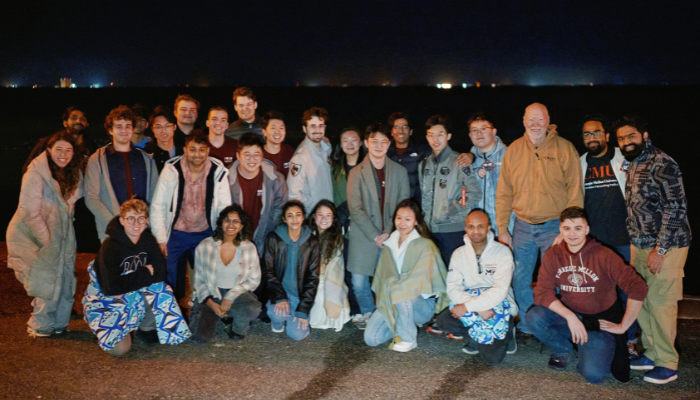
Carnegie Mellon’s Iris Rover Team before the launch on Jan 8, 2024.
(Photo Credit: Dhruva Reddy)

CMU Iris Rover Team gather under a bridge on a pier to witness the launch.
(Photo Credit: Di-ay)
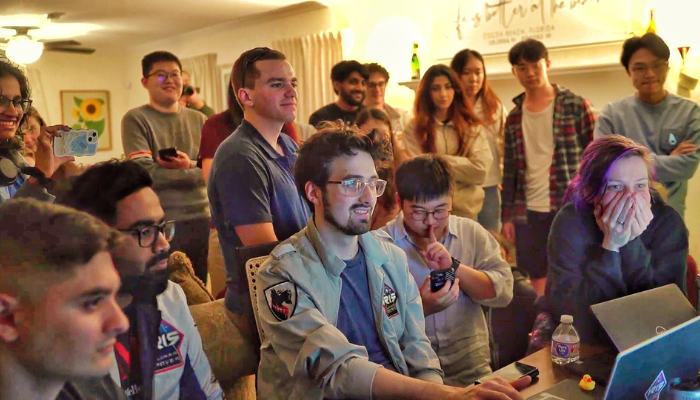
Team members gather anticipating establishing two-way communication with Iris Rover.
Pictured from left to right: Front: Hunter Wodzenski, Harshvardhan Chunawala, Connor Colombo, Perrin Tong, Raewyn Duvall; Back: MD Gajula, Peiqi Liu, Zach Muraskin, Jeffery John, Nikolai Stefanov, Divya Rao, Ivy He, Tony Hwang, Steve Wang.
(Photo Credit: Dhruva Reddy)

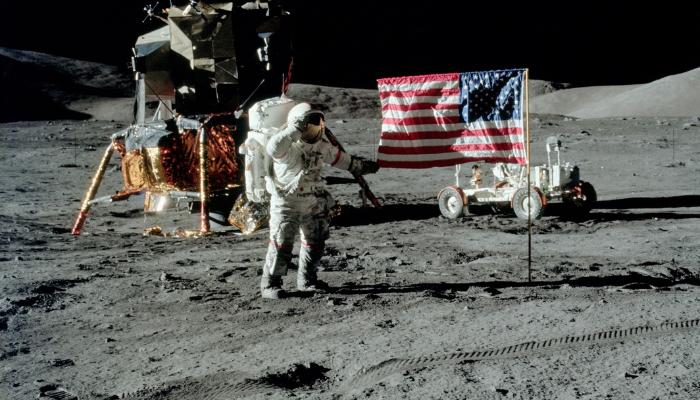
America’s Last lunar landing mission, NASA's Apollo 17.
(Photo Credit: Wikipedia)

An Unexpected Opportunity
Iris Rover was bolted to CMU-spinout Astrobotic’s Peregrine Lander, representing decades of the university's research into space exploration. The Peregrine Lander was aboard ULA’s Vulcan Centaur Rocket and targeted to land on the lunar surface on Feb 23, 2024. Iris was soon to be the smallest and lightest rover ever destined for “the Moon” — but due to unforeseen circumstances, the rover did not reach its target.
Not long after embarking on its lunar trajectory, the Peregrine Lander experienced difficulties with its propulsion system, which Astrobotic suggests led to an incorrect solar orientation. This misalignment inhibited the spacecraft's ability to charge its batteries effectively. The battery issue was later resolved, but soon Astrobotic made a new announcement that Peregrine Lander had experienced a propellant leak that hindered the intended lunar landing.
When the original mission plan of landing on the Moon was compromised, the team's agility was remarkable. They quickly pivoted to a new mission strategy, utilizing the unknown available days to maximize scientific research and contributions to humanity. Iris was in luck: the team had an opportunity to be powered on in space during this anomaly. The Iris team turned a mission threat into a remarkable opportunity for valuable data collection. This swift adaptation towards a fresh mission plan and effective use of time underscored the team's resilience and dedication to the mission's broader objectives.
Amidst the vast silence of space, a successful two-way communication link was established with the Iris Rover via the lander through NASA’s Deep Space Network. This marks a significant achievement in remote space communication. In their temporary Mission Control in Florida, the Iris team was aglow with anticipation, riveted to the screen, their expressions a tapestry of hope and elation.
As the first message from Iris pierced through the cosmos, the silence of the control room broke into a crescendo of cheers, joy and relief, as years of hard work and dreams were coming true. The Iris Rover beat all odds and responded with its first message: “Hello, Earth!”
Sending Messages through the Cosmos
The accomplishments of the Iris mission highlight its innovative design and ability to withstand the demanding conditions of space, showcasing engineering excellence and adaptability. The 2.2kg rover, with its carbon fiber chassis and wheels, successfully endured the launch and zero-gravity environment, highlighting its robust design. Its primary systems withstood the extreme temperatures and high radiation levels encountered during launch and transit, notably the radiation through the Van Allen belts.
The Iris team verified the operation of its nanorover systems, including basic functionalities with limited power and telemetry, using non-radiation-hardened components. The mission utilized NASA JPL's F' framework for its primary software and operated on independent battery power. Custom ground software alongside thermal modeling was validated, demonstrating the rover's advanced technological capabilities and laying the foundations for future space missions at CMU and beyond.
Below are some of the pre-set messages that the Iris Rover carried along on its space journey to be dispatched from the lunar surface. They were received on Earth via serial connection with the lander in space.
 "Harshvardhan Chunawala: Someone someday will find this message & wonder how did it get here?"
"Harshvardhan Chunawala: Someone someday will find this message & wonder how did it get here?"
"Information Networking Institute: We heard there is no Wi-Fi on the Moon? INI invented it on Earth way back in 1989! Email ini@cmu.edu"
"From CMU INI: Bridging technology & humanity. May our pursuit inspire your journey. ~Dena Haritos Tsamitis"
The Peregrine Mission One is NASA’s first Commercial Lunar Payload Service (CLPS) mission with a goal to land the first U.S.-built lunar lander — “Peregrine Lander” — on the Moon since 1972, when over 50 years ago NASA launched Apollo 17. In this space mission, the Iris team, including CMU cybersecurity researcher and INI alumnus Harshvardhan Chunawala, alongside the Iris FLEUR lead and INI alumnus Hunter Wodzenski, played key roles in the space systems development and space mission operations, showcasing their extensive expertise in computer science and cybersecurity.
“It has been half a century since CMU boots walked the moon, and it is great to be heading back with our first robot,” said William “Red” Whittaker, a faculty emeritus in the Robotics Institute who co-founded Astrobotic, mentored the Iris team and has been working on space exploration since the 1980s. Red is also the Principal Investigator (PI) of the Iris Rover. “In space what counts is what flies. Our missions, tech and people live by that value. By every measure, Carnegie Mellon University is a space-faring university.”
Whittaker joined the team to watch the launch.
“Having put about two decades into this, that was really big for me,” he said after the rocket’s glow had disappeared from the sky. “I started dropping a tear when it went up.”
He paused, looked at the team, and smiled.
“Now we have a job to do.”
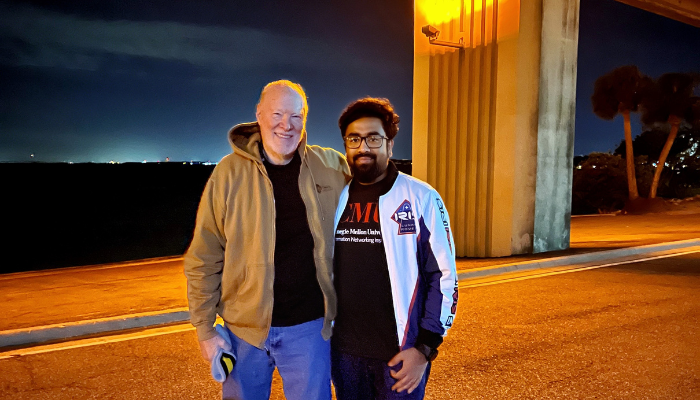
Astrobotic Co-Founder & PI of Iris Rover Red Whittaker with Cybersecurity Researcher & Mission Operator Harshvardhan Chunawala.
Two INI Alumni Lead the Way
Harshvardhan Chunawala identified the potential opportunities for CMU’s Information Networking Institute (INI) to contribute to the project. He worked with Dena Haritos Tsamitis, Director of the INI, and David Wettergreen, Director of the Ph.D. program at the CMU Robotics Institute, to develop hands-on technical pathways for INI students to contribute to CMU’s space missions and Engineering projects.
This collaboration resulted in INI students contributing to CMU’s space missions like Iris and upcoming rovers like MoonRanger. Through Practicum, a program that engages students in solving real-world challenges, INI students have developed core space systems and advanced ongoing research. This initiative acts as a bridge for INI students, immersing them in the forefront of space exploration by training them to navigate the challenges of the cosmos and continue the CMU space legacy.
H. Chunawala was an early contributor to building the Carnegie Mellon Mission Control (CMMC), which will be leveraged for all future space missions initiated from CMU, and is among the first INI students to work on CMU space missions. H. Chunawala became the first Lunar Rover Mission Operator from the INI on the Iris team to command the rover at a Lunar Distance of ~233,000 miles from The Earth.
“We've not just reached space; we've pushed the boundaries of our potential, setting a new paradigm for exploration,” said H. Chunawala. “Each bit of data from Iris was a pixel painting a picture of triumph in the canvas of space.”
INI alumnus Wodzenski led a team of fellow students to design and develop the mission control software, Failure List Evaluator for Ultimate Response (FLEUR), at CMMC. FLEUR is an advanced tool designed to systematically analyze and prioritize system errors or malfunctions. It visualizes the rover's state through telemetry and guides operators with a dedicated troubleshooting interface.
Wodzenski was first introduced to space exploration when he took the CMU's Space Robotics course as an elective while pursuing his MS in Information Security (MSIS) at the INI. After graduating, Wodzenski continued to be a member of CMMC and witnessed Mission Control grow one mission simulation after another into a fantastic interdisciplinary team representing each of the seven CMU colleges. Wodzenski had the opportunity to plan and operate the rover alongside the team through Iris's journey aboard Peregrine to lunar distance and back.
Completing the Mission
The spacecraft continued in orbit for ten days before being deliberately steered back into the Earth's atmosphere on January 18, 2024, at 4:04 pm EST along with Iris Rover. The space mission concluded its journey over the Southern Pacific Ocean, about 400 miles away from Fiji Islands, in a controlled re-entry. While Iris’ journey didn’t go as planned, the students succeeded in building a piece of space-faring technology that has made it farther from Earth and closer to the Moon than any student-built rover has to date. CMU was also the first university to spearhead its lunar mission.
“This tiny rover sends a big message: space exploration is for everyone,” said Raewyn Duvall, research staff in the Robotics Institute and a rover executive director for the Iris mission. “Today’s launch sent the first university rover, developed and operated by students, on its way to the moon.”.
Iris became the smallest and lightest rover ever to go to space, and the first university-built lunar rover to travel to space. It marks a pivotal shift toward democratizing space exploration by providing an executed Proof-of-Concept of ultra low-cost rovers. With its budget measured in the hundreds of thousands of dollars, as opposed to millions of dollars, Iris opens up space exploration to broader participation and innovation.
The lessons learned and insights gathered from Iris are instrumental for future missions, notably MoonRanger, paving a road for a sustainable, cost-effective model for lunar exploration. This iterative learning and application process exemplifies how space missions can evolve to become more inclusive and efficient, heralding a new era of accessibility in space exploration.
